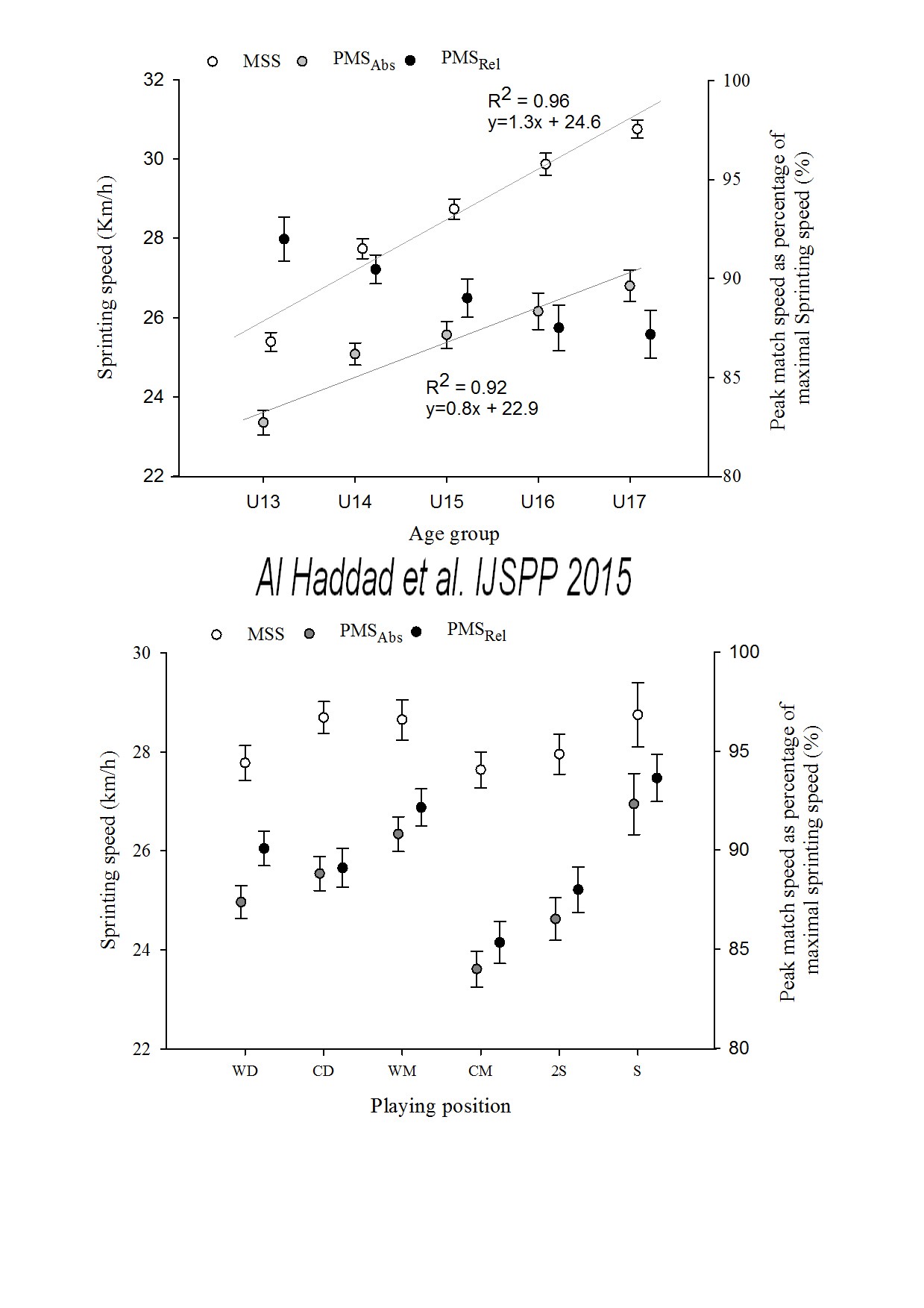Peak match speed and maximal sprinting speed in young soccer players: effect of age and playing position
Hani Al Haddad, Ben M. Simpson, Martin Buchheit, Valter Di Salvo and Alberto Mendez-Villanueva. Peak match speed and maximal sprinting speed in young soccer players: effect of age and playing position. IJSPP, 2015, In press.
 Figure 1. Data are presented as mean and 90% confidence interval for maximal sprinting speed (MSS, white circles), peak match speed (PMSAbs, gray circles) and PMSAbs as percentage of MSS (PMSRel, black circles).
Figure 1. Data are presented as mean and 90% confidence interval for maximal sprinting speed (MSS, white circles), peak match speed (PMSAbs, gray circles) and PMSAbs as percentage of MSS (PMSRel, black circles).
Abstract:
In this study we assessed the relationship between peak match speed (PMS) and maximal sprinting speed in regard to age and playing positions. Maximal sprinting speed and absolute PMS (PMSAbs) were collected from 180 male youth soccer players (U13 to U17, 15.0 ± 1.2 yrs, 161.5 ± 9.2 cm and 48.3 ± 8.7 kg). The fastest 10-m split over a 40-m sprint was used to determine maximal sprinting speed. PMSAbs was recorded using a global positioning system and was also expressed as a percentage of maximal sprinting speed (PMSRel). Sprint data were compared between age groups and between playing positions. Results showed that regardless of age and playing positions, faster players were likely to reach higher PMSAbs and possibly lower PMSRel. Despite a lower PMSAbs compared with older groups (e.g., 23.4 ± 1.8 vs. 26.8 ± 1.9 km/h for U13 and U17, respectively, ES= 1.9 90% confidence limits (1.6;2.1)), younger players reached a greater PMSRel (92.0±6.3% vs. 87.2±5.7% for U13 and U17, respectively, ES= -0.8 90% CL (-1.0; -0.5)). Playing position also affected PMSAbs and PMSRel, as strikers were likely to reach higher PMSAbs (e.g., 27.0 ± 2.7 vs. 23.6 ± 2.2 km/h for strikers and central midfielder, respectively, ES= 2.0 (1.7;2.2)) and PMSRel (e.g., 93.6 ± 5.2% vs. 85.3 ± 6.5% for striker and central midfielder, respectively, ES= 1.0 (0.7;1.3)) compared with all other positions. Present findings confirm that age and playing positions affect the absolute and relative intensity of speed-related actions during matches.
Key words: youth players, soccer, sprinting speed, playing position



